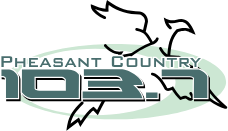ABERDEEN, S.D.(Press Release) — A state-of-the-art advanced technology Computed Tomography (CT) checkpoint scanner that provides 3-D imaging will soon be installed at the Transportation Security Administration checkpoint at Aberdeen Regional Airport (ABR).
“Along with providing critical explosives detection capabilities, this new technology improves the ability for our TSA officers to determine whether an item inside a carry-on bag is a possible threat,” said Acting South Dakota TSA Federal Security Director David Durgan.
The machine is being installed at ABR starting Tuesday, May 30, and installation is expected to be complete with normal operations by Thursday, June 1. During times of high volume, delays and lines are possible at the checkpoint. Passengers should arrive at the airport 90 minutes before their flight and keep prohibited items out of their carry-on bags to help ensure an efficient screening experience for everyone.
This equipment is similar to what is used to scan checked baggage for explosive devices. It has been “sized” to fit at checkpoints to create such a clear image of a bag’s contents that the system can automatically detect explosives, including liquids, by shooting hundreds of images with an X-ray camera spinning around the conveyor belt to provide TSA officers with the three-dimensional views of the contents of a carry-on bag. Checkpoint CT technology should result in fewer bag checks. Passengers using this machine will be permitted to leave laptops and other electronic devices in their carry-on bags.
This technology is also coming to Watertown Regional Airport (ATY) and Pierre Regional Airport (PIR) later in June.
As the summer travel season kicks off, TSA is reminding passengers of other steps they can take to get through the checkpoint quickly and efficiently.
Pack smart; start with empty bags. Airline passengers who pack for travel with empty bags are less likely to bring prohibited items through a TSA checkpoint. Technology and modifications help reduce the need for physical contact with TSA officers, but those who take time to come prepared for the TSA checkpoint are far more likely to avoid delay and physical contact. Check for prohibited items by using the “What Can I Bring?” page on TSA.gov.
Know before you go. Airports, like highways, have high traffic surges and construction delays. Plan to arrive at the airport in plenty of time to check in, check bags and complete security screening in time to avoid stressful sprints to the departure gate. At the TSA checkpoint, have a valid ID card readily available and follow the liquids rule of 3.4 ounces or less.
Contact TSA for help if there are questions or concerns. Those who are preparing to travel and may have special circumstances, considerations or general questions about airport screening can get live assistance by tweeting questions and comments to @AskTSA or via Facebook Messenger, daily from 8 a.m. to 6 p.m. EDT. You can also call the TSA Contact Center at 866-289-9673.
TSA also offers TSA Cares, a helpline for travelers with disabilities, medical conditions and other special circumstances. You may submit a request for assistance by calling TSA Cares at 855-787-2227, weekdays from 8 a.m. to 11 p.m. and weekends/holidays from 9 a.m. to 8 p.m. Passengers may also use the TSA Cares form available on the TSA website which can be found at https://www.tsa.gov/travel/passenger-support.
Enroll now in TSA PreCheck® to “Travel with Ease.” By enrolling in TSA PreCheck, airline passengers can avoid removing shoes, belts, liquids, food, laptops and light jackets at the TSA checkpoint. Most new enrollees receive their known traveler number within five days, and membership lasts for five years.







